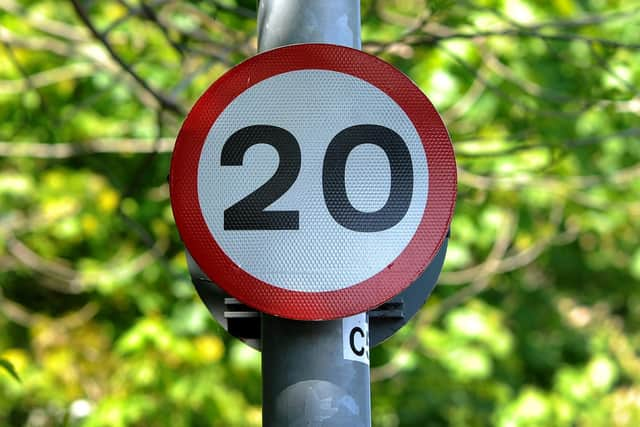Haven’t we got enough to worry about without 20 mph zones being thrust on communities? - Jayne Dowle
I take my life in my hands every time I leave the house and cross the road with the dog to take him for his evening walk around the field. When my elderly parents come to visit and park outside, we have to go out, stand in the road, and act as lollipop people to halt the traffic whilst they make their way to the car, because these reckless drivers will stop for nothing or no-one.
Reversing off the drive? It’s a lottery, every time. I can’t back my car onto it safely when I return home so I’m facing forwards, because in the time it took, some driver would likely charge around the bend straight into me.
Advertisement
Hide AdAdvertisement
Hide AdOur local councillor keeps saying that we’re getting speed bumps to slow drivers down on this bend and the third of the mile of straight road from my house to the crossroads (another accident blackspot) but they haven’t appeared.


There was also talk of a flashing 30 mph warning sign to chide speeders into slowing down, but that’s not appeared either.
You might think that with my experiences, I’d be all in favour of reducing the speed limit to 20mph, because as studies have shown, driving at just 10 mph less than we habitually do in areas frequented by pedestrians and cyclists can literally be a matter of life and death.
I’ve seen the recent data from Wales too, collected by public health analyst Agilysis, where a 20mph speed limit was introduced in built-up areas in the middle of September.
Advertisement
Hide AdAdvertisement
Hide AdIn a number of Welsh towns and cities, including Wrexham, Bangor and Cardiff, researchers found that the new top speed of 20mph was being followed, hailing the results as “astonishing”, at least in terms of obedience and improved air quality.
Less pollution from lower vehicle emissions aside, the case for slower traffic, and it’s being adopted in other countries too, including Spain, rests on one simple argument: at 20mph, a vehicle’s stopping distance is half that at 30mph. According to the Royal Society for the Prevention of Accidents, the risk of a pedestrian being killed is five times lower.
And yet, if I lived in Wales, or under a local authority opting to follow the mantra of speed limit reduction campaign group 20’s Plenty for Us, set up in Warrington, Cheshire by retired IT consultant Rod King, 73, now with 692 branches around the UK, I would still rail against this fresh imposition.
It’s the steady march of unchecked zealotry that needs stopping in its tracks. The interesting thing about local road speeds are that they are not handed down from on high as edicts by the Department for Transport. Typically, it’s up to local government to decide how fast drivers should go.
Advertisement
Hide AdAdvertisement
Hide AdI was quite shocked to learn that almost half — 61 out of 133 — highway authorities in England have already adopted the 20mph limit in built-up areas, and more than half of London’s roads are 20mph.
And, as I’m teaching my daughter to drive – I’m constantly saying ‘watch your speed’ – it’s other drivers on the road who think rules don’t apply to them I’m worried about. I have two friends who are driving instructors and both say that standards of driver behaviour, tolerance and respect have plummeted in recent years.
The abuse, harassment, horn-beeping, tailgating and general anger we’re experiencing, even maintaining a steady 30mph is bad enough; imagine if my 17-year-old was trying to stick to 20mph for miles.
Driving should be, ideally, one of the few activities we can do – and even enjoy – without ending up polarised by which side of the debate we’re on.
Advertisement
Hide AdAdvertisement
Hide AdWithin a week of the 20mph policy being instigated in Wales, more than 373,000 people, greater than the population of Cardiff and about 15 per cent of the country’s adult population, had signed a petition calling for a repeal. Will they get one? Unlikely, although many 20mph signs have been defaced already and there is certainly if not revolution, then rebellion in the air.
As we face another winter of uncertainty, with Westminster politicians treading water, fears over interest rates and the cost of living crisis, and a police force already so stretched that officers can’t go out to burglaries and yes, car thefts, haven’t we got enough to worry about?
